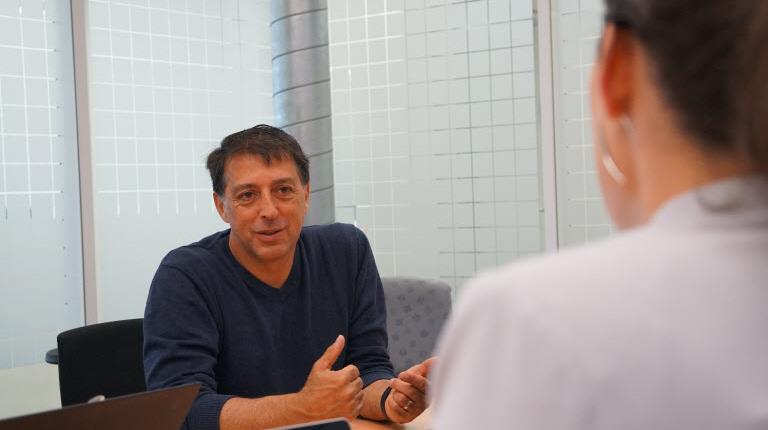CSL Behring’s Nathan Roth knows his pathogens.
And he’s not afraid to tout his team’s industry-leading expertise in vanquishing viruses and other impurities from manufactured medicines. Remember all the media coverage of the Zika virus, a virus transmitted by mosquitoes? Roth coauthored a paper in the journal Transfusion on how CSL Behring’s virus filtration and deactivation systems tackle Zika.
The virus, which surged in 2015, threatens the health of unborn babies if their mothers are infected. But in lab tests, CSL Behring’s manufacturing safety processes easily removed or inactivated Zika from the fractionated byproducts of plasma, a component of blood that’s used to make some of the company’s medicines for patients.
“The virus was no match for our processes, which are really effective,” said Roth, who is based in Bern, Switzerland, where CSL Behring has a large, leading-edge facility. He was recently named Executive Director of Bern Plasma Product Development R&D (a.i.) and Global Pathogen Safety. Eleonora Widmer is now Interim Acting Head of Global Pathogen Safety.
With a charge as important as patient safety, Roth’s job also means he and his team must always look around the corner. An emerging virus, like Zika was in 2015, needs to be closely tracked. The Global Pathogen Safety team - including about 40 biochemists, virologists and process development scientists in the United States, Switzerland, Germany, Australia and China - have established surveillance processes to routinely scan the globe for potential emerging pathogens.
“It’s a complementary approach to ‘pharmacovigilance,’ we like to just call it ‘vigilance.’ We’re vigilant about what else is coming out there. We see it way in advance of CNN,” Roth said.
A fully functioning safety system protects patients and avoids delays in getting medicines to the people who need them, Roth said. And as CSL Behring moves into recombinant (lab-made) protein therapies and gene therapies, its pathogen safety systems are branching out as well.
The Global Pathogen Safety Team tests its processes in a lab environment and then, when assured that they work on a small scale, they transfer those processes to large-scale manufacturing. CSL Behring, a global biotechnology company, makes medicines for people around the world who have rare and serious diseases, such as hemophilia, primary immunodeficiencies and hereditary angioedema.
Roth trained at the University of Calgary, where he received his Ph.D., and did a stint for CSL Behring’s predecessor in Kankakee, Illinois before the company took over manufacturing operations there. In Kankakee, he worked on a U.S. Navy-funded project to provide shelf-stable platelets, a component of blood needed to stop bleeding. To accomplish the goal, the team combined platelets from 10 or 20 people, creating a heightened need for testing and purification. For Roth, it was a first step toward becoming one of the world’s experts in pathogen removal.
In his several decades of experience, Roth says technology has made big leaps, especially the advent of dedicated, highly effective steps in the safety and purification process.
“I would never think twice about giving our products to my parents or my kids. I’m so confident in our safety,” Roth said.
For instance, today’s viral filters act as precision sieves to remove viruses. How do they work? Though you can’t see either one without a microscope, viruses are many times larger than the proteins, such as immunoglobulin, which are integral in some of CSL Behring’s products. In the filters, the viruses get caught.
Being an industry leader also means collaborating with other experts and staying on top of the science. Roth serves as a member of the Pathogen Safety Steering Committee through the Plasma Protein Therapeutics Association. The committee is recognized as a resource by both the U.S. Food and Drug Administration and the European Medicines Agency.Members of his team – from younger scientists to experienced leaders in the field – publish papers in scientific journals and are sought after to make presentations at major congresses, he said.
“Our goal is to share knowledge, with other biotechnology industry members and regulators, in order for us to provide safe and a reliable supply of products for patients.”



